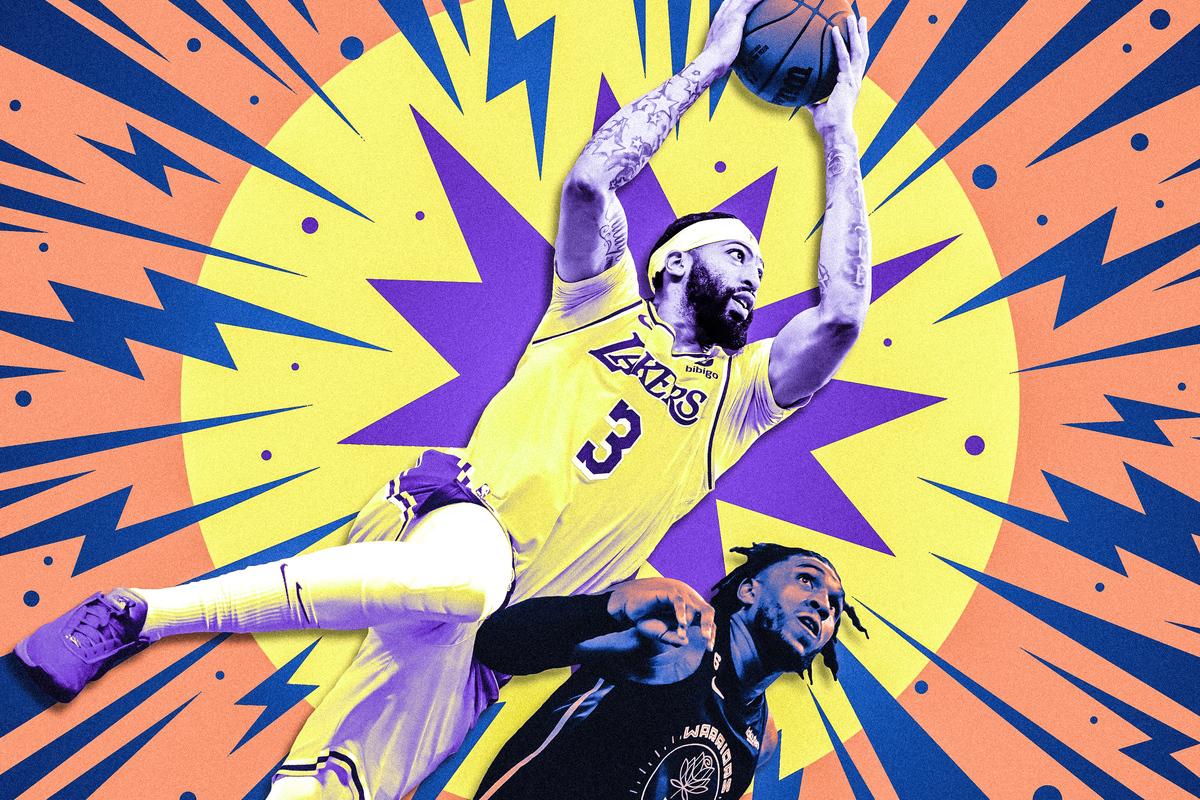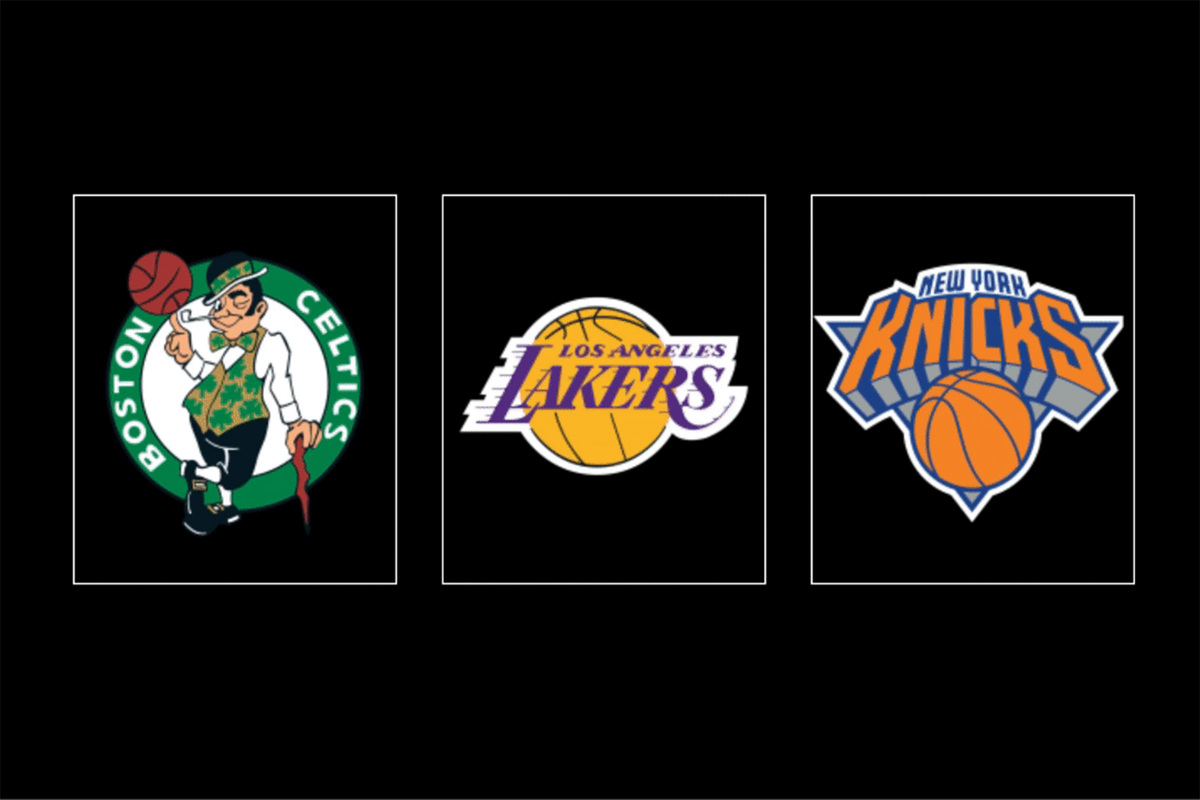
NBA players can project absolute confidence from the podium of a postgame press conference, but out on the floor, in the heat of play, they’ll show you what they’re really afraid of. A young player might clam up when the ball swings their way in crunch time. An aging veteran—feeling their own athletic mortality—might balk at the kind of fast break they used to dominate. Or, in the case of Golden State’s Andrew Wiggins, one of the most vital members of last season’s championship team might position himself right under the basket, catch a pass in perfect rhythm, and completely freeze when he sees Anthony Davis out of the corner of his eye.
Wiggins was hardly alone on Tuesday night, when the Warriors opened their second-round series against the Lakers by collectively expressing that same fear, over and over, in just about every way possible. They rushed shots whenever Davis was around, or even might have been. They overpassed and overthought. They shied away from drives entirely at times, and failed to create any of the momentum going toward the basket that had carried them through the previous round. “I mean, a lot of it is Anthony Davis,” Klay Thompson said. It was the most dominant performance of the playoffs thus far: 30 points, 23 rebounds, five assists, and not only four blocks, but total defensive control. The Laker big man was everywhere in Game 1—looming on every play, and in the mind of every Warrior. And Golden State lost, 117-112, because of it.
“They want to try to put pressure on the perimeter, funnel everything into the paint, and allow him to disrupt a lot—closing space pretty quick,” Stephen Curry said. “It’s kind of deceiving. You feel like you have a good look to get over the top, and he gets a fingertip on it.”
Do that enough times, and you can change not only the way an opponent plays, but also the way they think. The Warriors built a dynasty through skill and range, with every action predicated on the idea that Curry and Thompson can shoot from practically anywhere. But it can’t stop there; the fullest version of Steve Kerr’s offense leverages that constant threat to create balance. A dribble handoff for Thompson opens up a roll to the rim for Draymond Green. The sheer panic of attempting to track Curry dislodges an entire defense, allowing Kevon Looney to gobble up offensive rebounds.
There were flashes of that in Game 1, but only flashes. Everything else was blotted out by Davis, whose long shadow inside made a jump-shooting team only that. “With Davis in the paint, you’re not going to get anything easy at the rim,” Kerr said. “So you still have to try to attack. You can’t just play around the 3-point line the whole game.” Golden State largely tried anyway, hoisting up 53 shots from beyond the arc in Game 1: some by design, some when they were all but invited, and others because nothing else seemed to materialize. A Warriors team that doesn’t get to the free throw line much on its best nights barely earned that privilege at all, taking just six foul shots to the Lakers’ 29. Golden State made its runs and nearly closed the gap in crunch time, but for the most part, Davis and his teammates succeeded in flattening out the most vibrant, layered offense of its era.
Many of the Warriors’ playoff opponents over the years have managed to either hound Curry as he winds around the floor or clog up the paint—but not both. Game 1 suggests the Lakers could be an exception. Jarred Vanderbilt drew the assignment of guarding Steph out of the gate and played a top-locking style of defense that Curry and the Warriors are all too familiar with. What’s not so familiar are the dimensions involved; Vanderbilt isn’t just 6-foot-8 but a lanky 6-foot-8, with reach enough to keep Curry constantly looking over his shoulder. Having a defender that long on his back while the even-longer Davis stepped up to meet him boxed Curry in at times, entangling his drives in over 14 feet of wingspan. Steph still managed to spring loose for 27 points on the night, but that it took 24 shots and so much effort was a great bit of work by the Lakers defense.
When it wasn’t Vanderbilt chasing Curry, it was Dennis Schröder, and when it wasn’t Schröder, it was whatever Laker was nearest when the sirens went off. The great constant, though, was the cover that every one of L.A.’s perimeter defenders got from Davis, who walked a perfect balance of straying off of his own man (often Looney, and later Green) to apply pressure without really getting burned. There were times when it seemed as if the Warriors might have been better off running a more conventional high pick-and-roll at Davis just to limit his capacity to shade into the play—but attacking one of the most mobile bigs in the league is a daunting proposition in its own right.
”He’s one of the few guys that can defend laterally and vertically,” Lakers coach Darvin Ham said. “By that, I mean he can get down in a stance and move his feet, keep a guard in front of him, force a tough, contested shot. He can meet you at the basket, change your shot, or get a block. Also do all of that and still corral a defensive rebound.”
Davis is a skeleton key of defensive coverage—capable of jamming up the Grizzlies in one series and derailing the Warriors’ polar opposite offense in the next. Golden State went to a smaller lineup down the stretch of Game 1 in the hope that it might find more room to breathe. Looney had 10 points, 23 rebounds, and five assists in this game and was just days removed from breaking the Sacramento Kings with his work on the offensive glass. Yet Davis and the Lakers created enough problems to make the Warriors think they were better off without him in those closing moments and that they might be able to get more flow into their offense by playing Draymond at the 5. They succeeded in that, but the results weren’t all that different from before:
Just look at that sequence. The floor was spaced, but an apprehensive drive from Jordan Poole led to a dump-off pass to Green, who wanted no part of challenging Davis inside. So he kicked it to Poole in the corner for a 3 instead, and a miss. Wiggins secured the rebound and passed out to Green. Green then found Thompson, who never even considered breaking the plane of the 3-point line. Another shot and another miss, which Wiggins again collected and kicked out, this time to Poole—who made enough of a drive to get one foot in the paint, and then took off in the complete opposite direction as soon as he encountered Davis. Poole flipped a pass out to Curry for another tough-but-makeable look from 3 that, yet again, missed.
There’s the entire game in 21 seconds: an offense of infinite possibility reduced to a single dimension, over and over, by a big who never even had to challenge a shot. That’s not just fear—it’s respect. It’s three and a half quarters of cause and effect, and a Warriors team that has seen everything looking a bit shell-shocked. If Golden State is going to change the balance of this series, it will have to change how it attacks Davis, starting with finding the willingness to attack him at all.
“That’s how he makes an impact on that end of the floor,” Curry said. “And you can’t be stubborn thinking you can just keep going in there. You’ve still got to be able to drive and put pressure on the rim, but you can do it in a creative way.”
History tells us the Warriors will tap into that creativity again, as they have in winning their past 19 Western Conference playoff series—a shutout run during the Kerr era. Sometimes it’s as simple as changing up who triggers the handoffs or who sets the screens. Sometimes it’s just the repetitive stress of defending these same actions, run every which way, until the defense starts to break. Davis shadowed every play on defense and carried the Lakers offense for 44 minutes in Game 1. He played the entire second half and finally started to run out of steam down the stretch. And on Thursday, he’ll have to do it all over again.
That’s what it takes to beat the defending champs. There is a desperation in how the Lakers guard Steph—in the way they sold out to contain him in Game 1, ignoring the majority of his teammates in the process. It was there in Golden State’s most important offensive possession, when Curry pushed the ball up court with a chance to tie the game and drew two defenders as soon as he crossed the logo. That’s not game-planning—it’s a survival instinct. Curry kicked the ball to Green, who swung it to Poole, and the 23-year-old fired up a deep 3. A bit too deep, maybe, but it was an open look for a hot-handed shooter who had already made six 3-pointers on the night. After an essentially perfect outing from Davis, Game 1 ended with the Lakers taking a risk—making a play out of fear of what Curry might do, and holding their breath.


